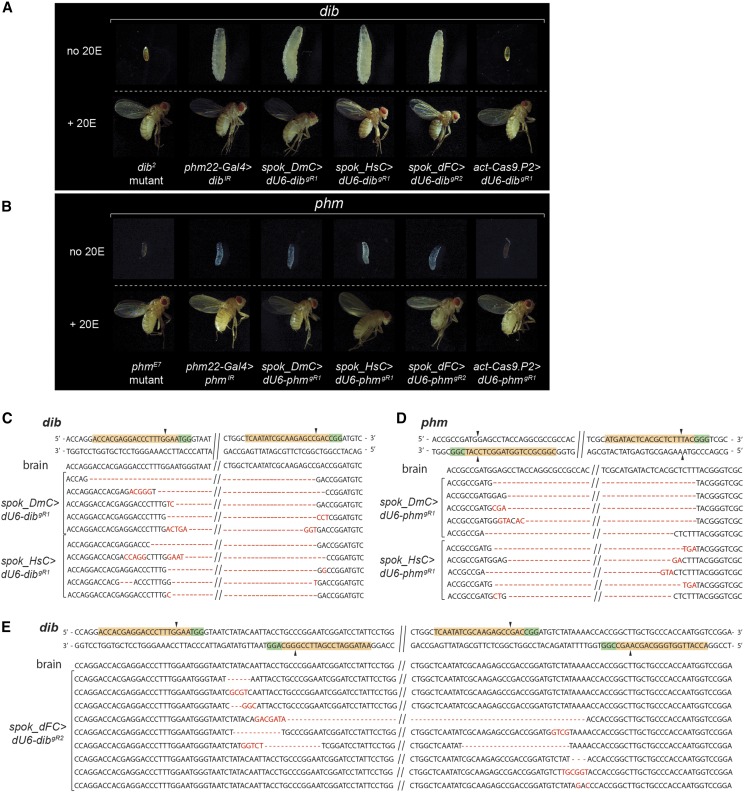Figure 6.
Efficiency of tissue-specific CRISPR/CAS9 in the Drosophila prothoracic gland (PG). A. Comparing phenotypes of a classic disembodied mutant (dib2) and PG-specific RNAi (dibIR) with PG-specific (spok_DmC, spok_HsC and spok_dFC) or ubiquitous CRISPR/Cas9 (act-Cas9.P2). B. Comparing phenotypes of a classic phantom mutant (phmE7) and PG-specific RNAi (phmIR) with PG-specific (spok_DmC, spok_HsC and spok_dFC) or ubiquitous CRISPR/Cas9 (act-Cas9.P2) in combination with dU6-dibgR1 or dU6-phmgR2. C and D. Sequences of dib (C) and phm (D) loci from brain and PG nuclei, using either spok_DmC or spok_HsC in combination with dU6-dibgR1 or dU6-phmgR1. E. Sequences of dib locus from brain and PG nuclei using spok_dFC.

